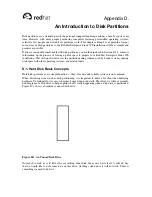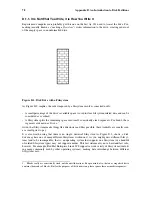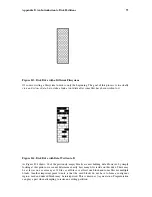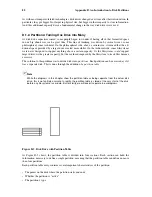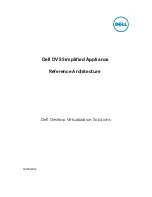
90
Appendix D. An Introduction to Disk Partitions
D.1.8. How Many Partitions?
At this point in the process of preparing to install Red Hat Enterprise Linux WS, you will need to give
some consideration to the number and size of the partitions to be used by your new operating system.
The question of "how many partitions" continues to spark debate within the Linux community and,
without any end to the debate in sight, it is safe to say that there are probably as many partition layouts
as there are people debating the issue.
Keeping this in mind, we recommend that, unless you have a reason for doing otherwise, you should
at least create the following partitions:
•
A swap partition
— Swap partitions are used to support virtual memory. In other words, data is
written to swap when there is not RAM to hold the data your system is processing. You
must
create
a swap partition to correctly use Red Hat Enterprise Linux WS. The minimum size of your swap
partition should be equal to twice the amount of your computer’s RAM or 32 MB, whichever is
larger.
•
A
/boot
partition
— The partition mounted on
/boot
contains the operating system kernel (which
allows your system to boot Red Hat Enterprise Linux WS), along with a few other files used during
the bootstrap process.
Caution
Make sure you read Section D.1.9 — the information there applies to the
/boot
partition!
Due to the limitations of most PC BIOSes, creating a small partition to hold these files is a good
idea. For most users, a 32 MB boot partition is sufficient.
•
A root partition (
/
)
— The root partition is where
/
(the root directory) resides. In this partitioning
layout, all files (except those stored in
/boot
) reside on the root partition. Because of this, it is in
your best interest to maximize the size of your root partition. A 1.0 GB root partition will permit the
equivalent of a Workstation installation (with
very
little free space), while a 3.2 GB root partition
will let you install every package. Obviously, the more space you can give the root partition, the
better.
Specific recommendations concerning the proper size for various Red Hat Enterprise Linux WS par-
titions can be found in Section 1.5.
D.1.9. One Last Wrinkle: Using GRUB or LILO
GRUB and LILO are the most commonly used methods to boot Red Hat Enterprise Linux WS on Intel-
based systems. As operating system loaders, they operate "outside" of any operating system, using
only the Basic I/O System (or BIOS) built into the computer hardware itself. This section describes
GRUB and LILO’s interactions with PC BIOSes and is specific to Intel-compatible computers.
D.1.9.1. BIOS-Related Limitations Impacting GRUB and LILO
GRUB and LILO are subject to some limitations imposed by the BIOS in most Intel-based computers.
Specifically, most BIOSes cannot access more than two hard drives, and they cannot access any data
stored beyond cylinder 1023 of any drive. Note that some recent BIOSes do not have these limitations,
but this is by no means universal.
All the data GRUB and LILO need to access at boot time (including the Linux kernel) is located in the
/boot
directory. If you follow the partition layout recommended above or are performing a Red Hat
Enterprise Linux WS install, the
/boot
directory will be in a small, separate partition. Otherwise, it
may reside in the root partition (
/
). In either case, the partition in which
/boot
resides must conform
to the following guidelines if you are going to use GRUB or LILO to boot your Red Hat Enterprise
Linux WS system:
Содержание ENTERPRISE LINUX WS 2.1 -
Страница 1: ...Red Hat Enterprise Linux WS 2 1 Red Hat Enterprise Linux WS Installation Guide...
Страница 10: ......
Страница 18: ...8 Chapter 1 Steps to Get You Started...
Страница 72: ......
Страница 74: ...64 Appendix A Removing Red Hat Enterprise Linux WS...
Страница 86: ...76 Appendix C Troubleshooting Your Installation of Red Hat Enterprise Linux WS...
Страница 102: ...92 Appendix D An Introduction to Disk Partitions...
Страница 110: ......


